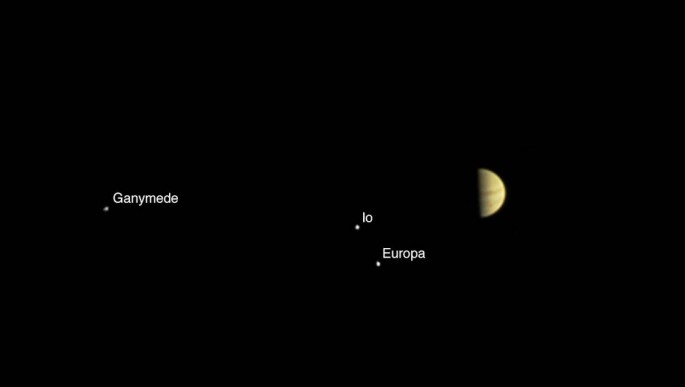NASA's solar-powered spacecraft "Juno" is all set to arrive on the giant ball of gas and the largest planet in the solar system, Jupiter, on July 4. The spacecraft, as wise as a basketball, is expected to take high-resolution images of the planet.
The spinning spacecraft will study the planet and take the highest quality images of Jupiter in the history of astronomy, according to CNN. The robotic spacecraft is equipped with seven science instruments, specially designed to learn about the formation and evolution of the giant ball of gas.
Jupiter is the most massive celestial body in the solar system. The planet is almost 11 times wider than the Earth. Astronomers and researchers around the works believe the notion that Jupiter is one of the earliest formed planets in the solar system and studying it in detail could potentially help understand how the entire solar system formed and evolved.
"One of the primary goals of Juno is to learn the recipe for solar systems," Scott Bolton, Juno principal investigator, said in a news conference that took place on June 16, 2016. "How do you make the solar system? How do you make the planets in our solar system?"
Although a number of spacecrafts have visited Jupiter previously, researchers are still confused about the behavior of the dense gas clouds that cover the planet. The percentage of water in its atmosphere and the presence of a solid core are some of the things that still remain uncertain about the planet. In addition, scientists are yet to decode the mystery behind the giant red spot on the planet.
According to Bolton, Jupiter looks a lot like the sun. However, it possesses much more than the Earth's star. Bolton believes that Jupiter is more of what the Earth, the entire solar system and the life is made of, the quality which is missing from the sun.
Juno will help understand how life originated in the first place by looking at its interior. The spacecraft will revolve around the planet, above the gaseous clouds, while escaping the hazardous radiation belts. To protect the spacecraft against potential hazards, the scientists have shielded it with electronic vaults.
The robotic spacecraft has three LEGO crew members and a color camera that will take a spectacular, close-up and colored images of the planet. The 11.5 foot tall spacecraft body also bears three open solar panels.
The following is the Juno: Mission to Jupiter 360 Video:



























